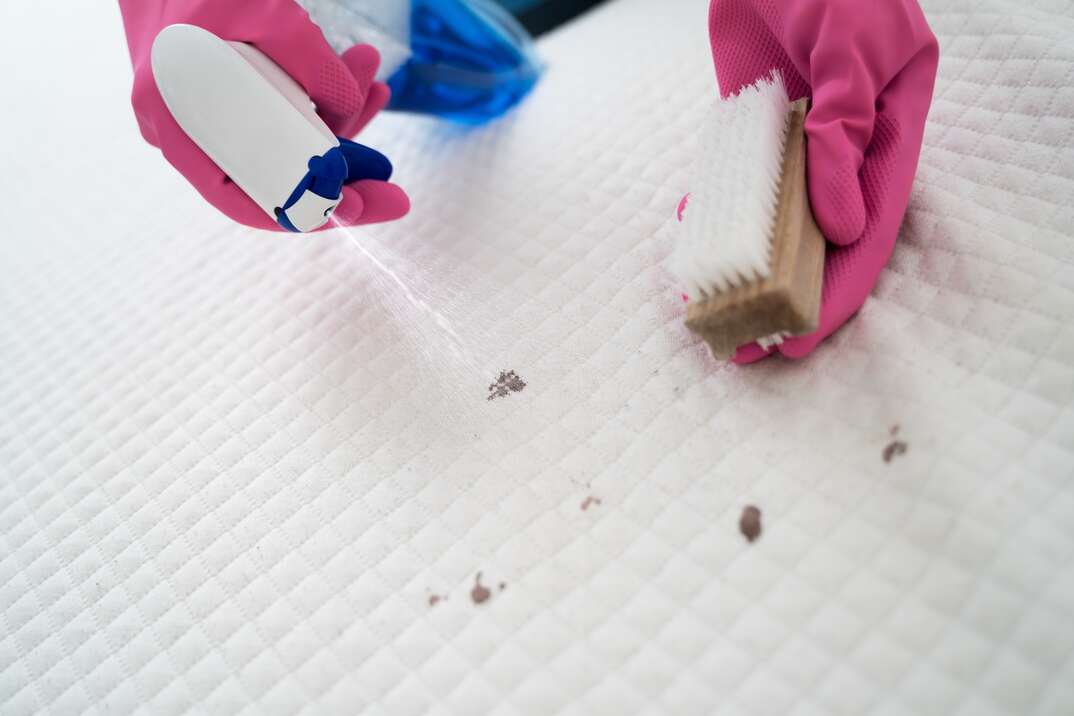How to Clean a Mattress

You hope for sweet dreams when you curl up in your bed each night, but thinking about all of the sweat, skin cells, dirt and other debris that can be hiding in your mattress could give you nightmares.
Learning how to clean a mattress properly can help you rest easy.
Why You Should Clean Your Mattress
You spend a lot of hours in your bed, so you want it to be a clean, healthy environment. Properly cleaning your mattress eliminates the debris that can make your mattress stinky, dirty or unpleasant.
Regular cleaning also eliminates dust mites and other debris that can irritate allergies or asthma. If you have kids, you might need to clean regularly to get rid of urine and other stains. Regular cleaning and mattress maintenance can also make it last longer, which helps you get more out of your investment.
1. Strip the bed of all linens. Toss the linens in the washing machine while you tackle the mattress.
2. Vacuum all surfaces of the mattress. This helps suck up the skin cells, hair and other tiny particles on the bed. Use the crevice tool to reach difficult areas or creases.
3. Spot-clean any stains that are visible on your mattress.
4. If your mattress doesn’t smell so great, sprinkle some regular baking soda all over it to help absorb odors. Leave it on the mattress for at least an hour, but longer is better. Then, vacuum the baking soda. You can skip this step if you don't feel like your mattress needs it.
5. Turn your mattress over and repeat the process on the other side.
6. To cut down on how dirty your mattress gets, invest in a mattress protector and put it on under your sheets.
7. Put your clean bed linens back on the mattress.
How Do You Remove Stains From a Mattress?
If the stain is fresh, take an old towel or rag and blot at the area. Soak up as much of the stain using this method as possible. Be careful not to rub the mattress stain, as this pushes the spilled liquid deeper into the fibers and can make the stain worse.
If the stain is still there, you can try a variety of cleaning tricks with items you have around your home. Here are some stain-removal methods to try:
Baking Soda Paste
Combine a little baking soda and salt with just enough water to turn it into a paste. Rub it into the mattress stain and wait 30 minutes or longer. Vacuum or wipe up the paste.
Hydrogen Peroxide Spray
Mix together 1 cup of hydrogen peroxide, 3 tablespoons of baking soda and a few drops of dish soap. Spray the homemade cleaner onto the mattress stain. Use a gentle cleaning brush to scrub the stain with the cleaner. Spray clean water over the area. Blot it up with a towel.
White Vinegar Cleaner
Another combination to try is equal parts of warm water and white vinegar with a few drops of dish soap. Spray the cleaner onto the mattress lightly, let it sit and blot it up with a clean rag. You can also use a scrub brush to help this cleaner remove the stain.
You might need to repeat the stain treatment multiple times before it all comes out of the mattress. When using liquid cleaners on a mattress, avoid over-saturating it. Too much liquid soaking into the mattress can encourage mold and mildew to grow, especially after you put your bedding back on. Mold spores love warm, moist environments, so be sure to let it dry completely.
How Often Should You Clean Your Mattress?
You typically only need to deep clean your mattress once every six months or so. If a child or pet has an accident in the bed, do a deep clean immediately to eliminate odors and prevent stains. Other spills should also be cleaned up right away to prevent lingering stains or odors.
Elocal Editorial Content is for educational and entertainment purposes only. Editorial Content should not be used as a substitute for advice from a licensed professional in your state reviewing your issue. Systems, equipment, issues and circumstances vary. Follow the manufacturer's safety precautions. The opinions, beliefs and viewpoints expressed by the eLocal Editorial Team and other third-party content providers do not necessarily reflect the opinions, beliefs and viewpoints of eLocal or its affiliate companies. Use of the Blog is subject to the
Website Terms and Conditions.The eLocal Editorial Team operates independently of eLocal USA's marketing and sales decisions.



